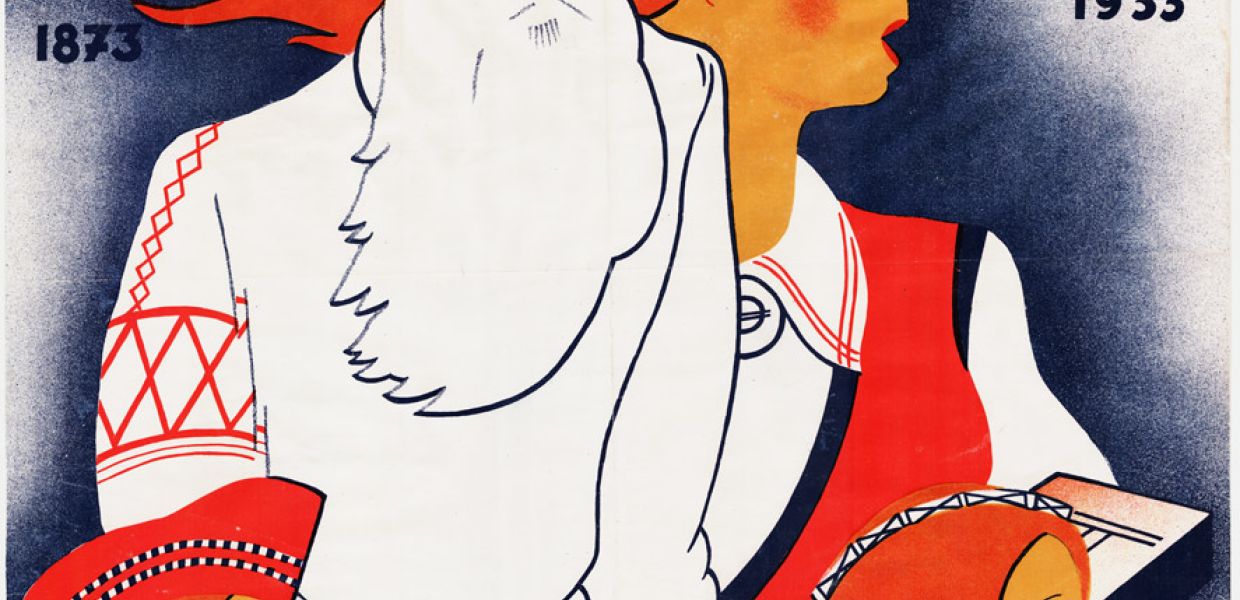Choosing a country's artworks for Europeana 280: Latvia

Ministries of culture together with museums and galleries all over Europe have been busy selecting their top artworks for the Europeana 280 collection. Over recent weeks, we've been finding out a little more about how and why particular images were selected and the stories behind some of the choices.
Here, Europeana 280's Exhibition Coordinator Ann Maher highlights nominations from Latvia. To give you a taste of what’s to come, we’ll start sharing some of the chosen works from different countries in March – so stay tuned!
In Latvia, the Culture Information Systems Centre operating under the supervision of the Ministry of Culture of Latvia was responsible for the nominations for Europeana 280. Selections came from the collections of the Latvian National Museum of Art (LNMM), an institution which has undergone many changes - in terms of its name, ownership, collection contents and operating policy, with further new developments to come in 2016.
Riga is one of the largest centres of Art Nouveau (Jugenstil) in Europe so it makes sense that some important art from that period has been nominated. Symbolist and art nouveau artists covered different genres including landscapes and portraits and play a key role in Latvia’s art heritage.

Dziesmu svētki Rīgā (1933), Latvijas Nacionâlâ Bibliotçka, CC BY-NC. Graphic art was one of many art forms practiced by the versatile Latvian Niklāvs Strunke (1894-1966). He also worked in the field of stage designing and painting. The 1927 selection for Europeana 280 is a cubist work influenced by Italian trends as encouraged by the Berlin gallery owner and futurist writer Ruggero Vasari.
So what kinds of works are included from these painters? One standout example is a portrait of a princess with a monkey by Janis Rozentāls (1866-1916), which reflects a theme he returned to repeatedly in the last years of his life. Some interpretations see the painting as an allegory of the relationship between an artist and society reflecting the power of money over the artist. Or perhaps the princess is ‘great, beautiful art’ and the monkey the artist: her servant and plaything, bound by golden chains. Rozentāls’ work included graphic art and in 1910 he worked on the decorative frieze of the newly built headquarters of the Riga Latvian Society.
Well travelled art
Another work from this period is a landscape from Vilhelms Purvītis (1872-1945) who is considered the central artist of Latvian art in the first half of the 20th century. His popularity has not diminished in the decades since his death in 1945 as a refugee in Germany. Winter, the selection for Europeana 280, is a very well travelled painting and ‘one of the most expressive examples of Art Nouveau in Latvian painting’ according to the LNMM.
At one time it adorned the apartment of millionaire newspaper owner Emīlija Benjamiņa but during Soviet times the Benjamiņš house was the home of the Writers’ Union. In 1954 the organisation gave the painting to the State Museum of Art (now the Latvian National Museum of Art). It represented Latvia for the 2007 exhibition Masterpieces of European art to dedicate the 50th anniversary of the European Union, so its inclusion in Europeana 280 marks another chapter in a fascinating story.
A selection from modernist painter Jēkabs Kazaks (1895-1920), a student at the Riga City Art School under Purvītis, portrays tough times for Latvians. In 1916, Kazaks changed his painting style under the influence of French modernists. He takes for his central subject matter the plight of Latvian refugees in World War I. An unsentimental depiction of a nation’s resilience, yet full of pathos, according to the National Museum of Latvia describing this image: “These people leave an impression of spiritual and physical unbreakability.”
By the 1920s, Latvian artists were interpreting modernist trends and forms including constructivisim and cubism. Niklāvs Strunke (1894-1966) took an active interest in many avant-garde forms including producing powerful graphic work. The 1927 nomination for the Collection incorporates the metaphysical trends current in Italian 1920s painting that were oriented towards the world of subconscious visions.
The talk of Riga society
But earlier history still affected later Latvian artists. The German occupation of Riga during the First World War left an indelible impression on artist Kārlis Padegs (1911-1940) despite him only being a small child at the time. Paintings such as Madonna with a Machine Gun were the result, and became the talk of Riga society. “The power of the grotesque seen in the modernist Padegs’ expressive drawings, watercolours and paintings has no parallel in Latvian art”, according to the museum about this selection. Padeg’s gun-toting Madonna was painted in 1932, an interwar period where national culture flourished. “Only he could have had the idea to paint a woman holding a machine gun as a challenge to common sense.”
We look forward to sharing more art selected for the Europeana 280 campaign soon. In the meantime, follow the conversation on Twitter via #Europeana280.
